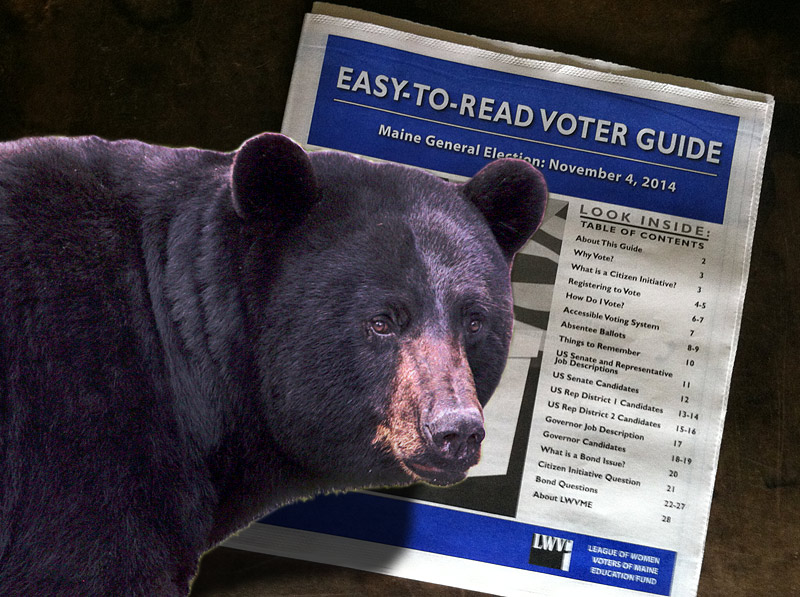Vote like it’s 1920! The League of Women Voters Election Guide is still a must-read

At the Penobscot Bay Pilot, we’ve been working hard to put together great election resources. But if you were only going to read one thing before you went to the polls on Nov. 4, we would have to defer to the League of Women Voters of Maine’s “Easy-to Read Voter Guide.”
With 27 spacious pages, the guide is exactly what it sounds like. The print is oversized and the writing makes no assumptions about what the reader may or may not know. The guide is nonpartisan, and if you’re not sure what that means, the definition of “nonpartisan” is right in there.
There’s a historical reason for this. When the League of Women Voters was founded in 1920, Congress was on the cusp of ratifying the 19th Amendment. This created 20 million first-time voters, and the newly-formed League encouraged women to use their new power by making the machinery of government as transparent as possible.
For today’s electorate, basic questions like “Why to Vote?” “How Do I Vote?” and “What is a Bond Issue?” are as relevant as ever. Around 4 million U.S. citizens turn 18 each year, making a comparable number to the 1920 suffragette wave every five years.
The guide devotes pages to contests for governor and federal offices that would be informative to voters of any age or experience. However its greatest triumph might be the light it sheds on state ballot measures, which tend to nearly impossible to understand based on the ballot wording alone. Along with the actual question, the LWV guide includes a short, plain-English explanation and bullet points with the main arguments, both for and against the measure.
Here’s how Question 4 is presented in the guide, starting with the actual ballot language:
Do you favor a $10,000,000 bond issue, to be awarded through a competitive process and to be matched by $11,000,000 in private and other funds, to build a research center and to discover genetic solutions for cancer and the diseases of aging, to promote job growth and private sector investment in this State, to attract and retain young professionals and make the State a global leader in genomic medicine?
What this question means:
The state wants to borrow $10 million to expand medical and genetic research. These funds will be matched by private funds. Maine would pay $10 million. Private and other funds would pay $11 million.
Argument for YES:
• Jobs may be created in the fields of biomedical and genetic research and in other areas of the Maine economy.
• Money is needed from the State of Maine to get the rest of the private money.
• The $10 million bond will be matched by $11 million in other funds.
• It may help attract young medical professionals and scientists to move to the state.
• It may specifically benefit the Jackson Laboratory on Mount Desert Island.
• Researchers may find new medical treatments for cancer and diseases.
Argument for NO:
• Maine would add $10 million to its total debt.
• It will cost a total of $12.2 million in principal and interest over ten years to repay the money.
• It may specifically benefit the Jackson Laboratory on Mount Desert Island.
• Some people think private institutions should not get taxpayer money.
• Other projects may be more worthy of the state’s money.
View the full guide here, or pick up a printed copy at your local library.
Ethan Andrews can be reached at news@penbaypilot.com























